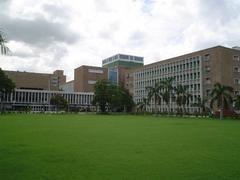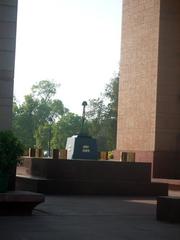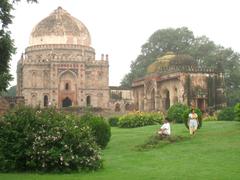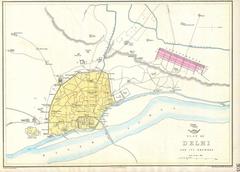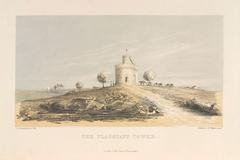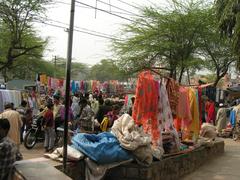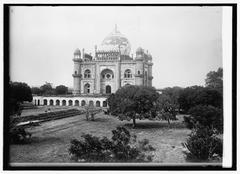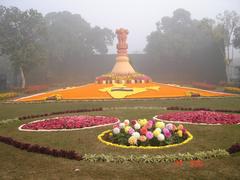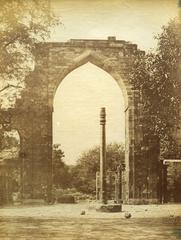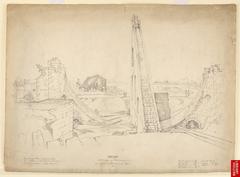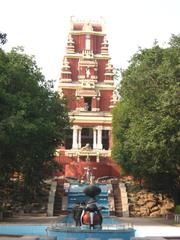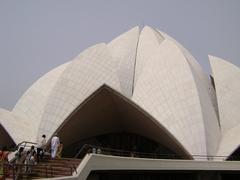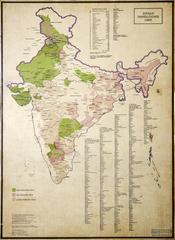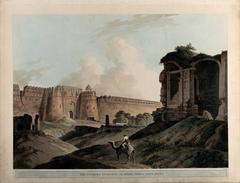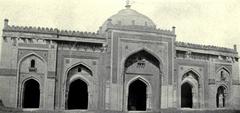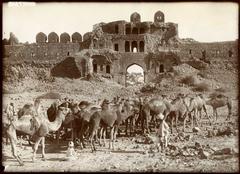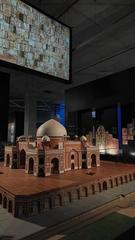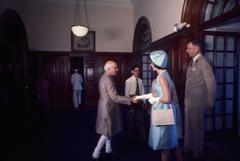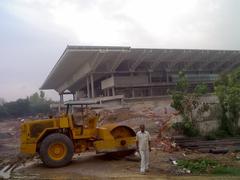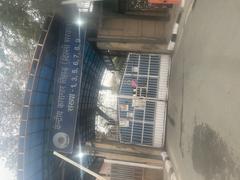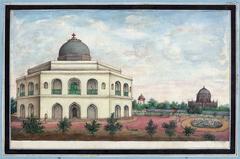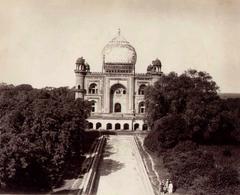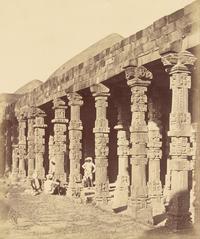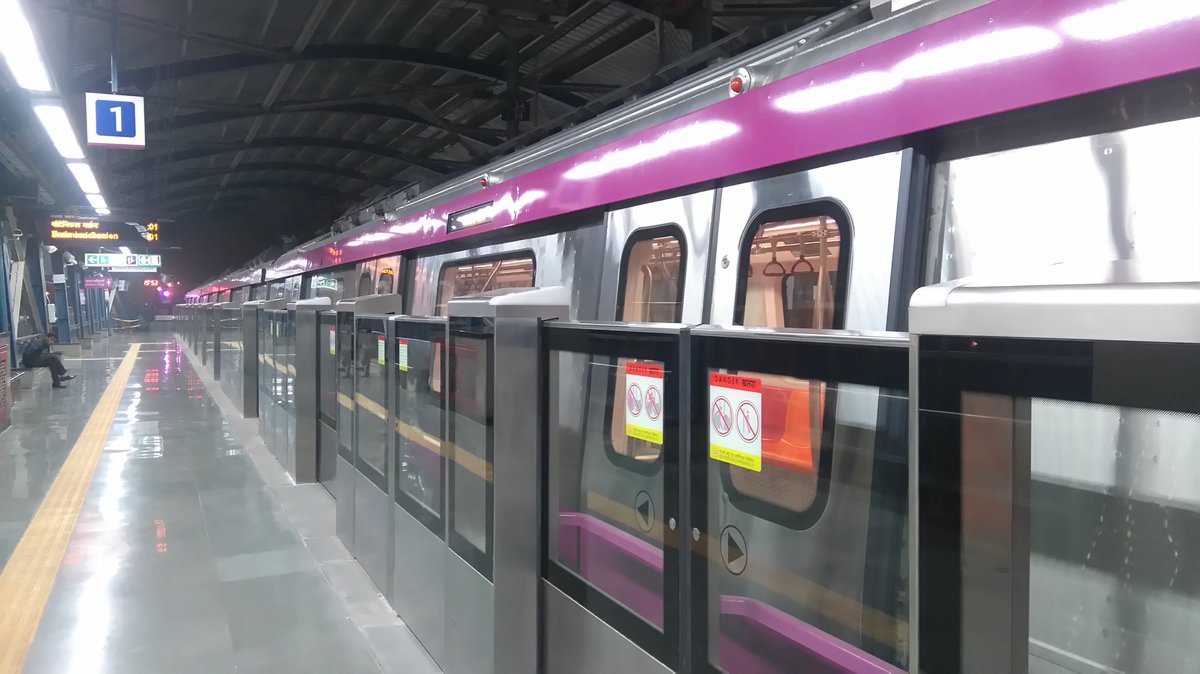
Comprehensive Guide to Visiting Okhla Bird Sanctuary Metro Station, New Delhi, India
Date: 16/08/2024
Introduction
The Okhla Bird Sanctuary Metro Station in New Delhi, India, serves as more than just a transit point on the city’s expansive metro network. Inaugurated on December 25, 2017, the station is part of the Magenta Line, enhancing connectivity between the western and southern parts of the capital. This strategic location offers easy access to the Okhla Bird Sanctuary, a natural reserve famous for hosting over 300 species of birds, including migratory species during the winter months (Wikipedia). Established in 1990, the sanctuary spans approximately 3.5 square kilometers, making it a haven for bird watchers and nature enthusiasts alike (Jovial Holiday).
The Okhla Bird Sanctuary Metro Station plays a crucial role in promoting eco-tourism and raising awareness about wildlife conservation. By offering a convenient and eco-friendly mode of transportation, the station helps reduce the carbon footprint associated with vehicular traffic—a significant concern in a city known for its high levels of air pollution. Moreover, the station’s design incorporates advanced features such as driverless trains and platform screen doors, ensuring both safety and efficiency for daily commuters and travelers (Delhi Capital).
The sanctuary and its metro station serve as a cultural landmark, embodying the harmonious coexistence of urban development and natural preservation. The station’s architecture features murals and installations that pay homage to the sanctuary’s diverse avian inhabitants, fostering a sense of community and shared responsibility towards preserving the natural heritage of the region (Times of India).
Table of Contents
- Introduction
- Historical Background
- Significance in Urban Connectivity
- Environmental and Ecological Impact
- Cultural and Social Relevance
- Economic Benefits
- Visitor Tips and Practical Information
- Nearby Attractions
- FAQ Section
- Conclusion
Historical Background
The Okhla Bird Sanctuary Metro Station, part of the Delhi Metro’s Magenta Line, was inaugurated on December 25, 2017. This station serves as a crucial link between the bustling city of New Delhi and the serene Okhla Bird Sanctuary. The Magenta Line itself is a significant addition to the Delhi Metro network, enhancing connectivity between the western and southern parts of the city.
The Okhla Bird Sanctuary, established in 1990, is located at the Okhla Barrage over the Yamuna River. It spans an area of approximately 3.5 square kilometers and is home to over 300 species of birds, including several migratory species that visit during the winter months. The sanctuary’s proximity to the metro station makes it easily accessible for both locals and tourists, thereby promoting eco-tourism and awareness about wildlife conservation.
Significance in Urban Connectivity
The Okhla Bird Sanctuary Metro Station plays a pivotal role in the urban transit system of New Delhi. It is strategically located to serve the residential and commercial areas of Noida and South Delhi. The station’s design and infrastructure are tailored to accommodate a high volume of passengers, ensuring smooth and efficient transit.
The Magenta Line, which includes the Okhla Bird Sanctuary Metro Station, is known for its advanced features such as driverless trains and platform screen doors, enhancing both safety and efficiency. This line connects important hubs like the Indira Gandhi International Airport, Kalkaji Mandir, and Botanical Garden, making it a vital corridor for daily commuters and travelers alike.
Environmental and Ecological Impact
The establishment of the Okhla Bird Sanctuary Metro Station has had a significant positive impact on the local environment. By providing a convenient and eco-friendly mode of transportation, the station helps reduce the carbon footprint associated with vehicular traffic. This is particularly important in a city like New Delhi, which grapples with high levels of air pollution.
Moreover, the station’s proximity to the Okhla Bird Sanctuary encourages more people to visit and appreciate the natural beauty and biodiversity of the area. This increased footfall has led to greater awareness and support for conservation efforts. The Delhi Metro Rail Corporation (DMRC) has also undertaken various initiatives to ensure that the construction and operation of the metro line do not adversely affect the sanctuary’s ecosystem.
Cultural and Social Relevance
The Okhla Bird Sanctuary Metro Station is more than just a transit point; it is a cultural landmark that reflects the harmonious coexistence of urban development and natural preservation. The station’s architecture and design incorporate elements that pay homage to the sanctuary, with murals and installations depicting various bird species and natural landscapes.
Socially, the station has become a meeting point for bird watchers, nature lovers, and conservationists. It hosts various events and activities aimed at promoting environmental education and awareness. These initiatives have fostered a sense of community and shared responsibility towards preserving the natural heritage of the region.
Economic Benefits
The metro station has also spurred economic growth in the surrounding areas. Improved connectivity has led to increased real estate values and commercial activities. Local businesses, including restaurants, cafes, and shops, have benefited from the influx of visitors to the sanctuary. Additionally, the station has created numerous job opportunities, contributing to the overall economic development of the region.
Visitor Tips and Practical Information
For tourists planning to visit the Okhla Bird Sanctuary via the metro station, here are some practical tips:
- Timings: The Delhi Metro operates from 6:00 AM to 11:00 PM. It is advisable to check the latest schedule on the Delhi Metro Rail Corporation’s official website before planning your visit.
- Tickets: Tickets can be purchased at the station or through the DMRC’s mobile app. Various fare options are available, including single journey tickets and tourist cards.
- Accessibility: The station is equipped with elevators, escalators, and ramps, making it accessible for differently-abled individuals.
- Facilities: The station offers amenities such as restrooms, drinking water, and seating areas. There are also information kiosks and customer service centers to assist passengers.
- Safety: Security checks are mandatory, and passengers are advised to cooperate with the metro staff. It is also important to adhere to the metro’s rules and regulations for a safe and pleasant journey.
Nearby Attractions
While visiting the Okhla Bird Sanctuary, you might also want to explore nearby attractions such as the Lotus Temple, ISKCON Temple, and the bustling markets of South Delhi. These sites offer a mix of cultural and recreational experiences that can enrich your visit.
FAQ Section
Q: What are the visiting hours for the Okhla Bird Sanctuary?
A: The sanctuary is open from 7:00 AM to 5:00 PM. However, these timings may vary seasonally, so it is advisable to check the latest information before planning your visit.
Q: How much is the entry fee for the Okhla Bird Sanctuary?
A: The entry fee for the sanctuary is nominal. For the most current rates, please refer to the official website or the sanctuary’s entrance.
Q: Are guided tours available at the Okhla Bird Sanctuary?
A: Yes, guided tours are available and can be arranged at the entrance. These tours provide valuable insights into the sanctuary’s diverse bird species and ecosystem.
Conclusion
The Okhla Bird Sanctuary Metro Station stands as a testament to the successful integration of urban infrastructure with environmental conservation. Its strategic location, advanced features, and cultural significance make it a vital part of New Delhi’s metro network. By facilitating easy access to the Okhla Bird Sanctuary, the station not only promotes eco-tourism but also fosters a deeper appreciation for nature among the city’s residents and visitors.
Don’t forget to download the DMRC mobile app for real-time updates and more information on your journey. Happy exploring!
References
- Wikipedia Okhla Bird Sanctuary Metro Station
- Jovial Holiday Okhla Bird Sanctuary
- Delhi Capital Okhla Bird Sanctuary
- Times of India Okhla Bird Sanctuary: Delhi’s Own Birdwatching Paradise
- Tripoto Okhla Bird Sanctuary


